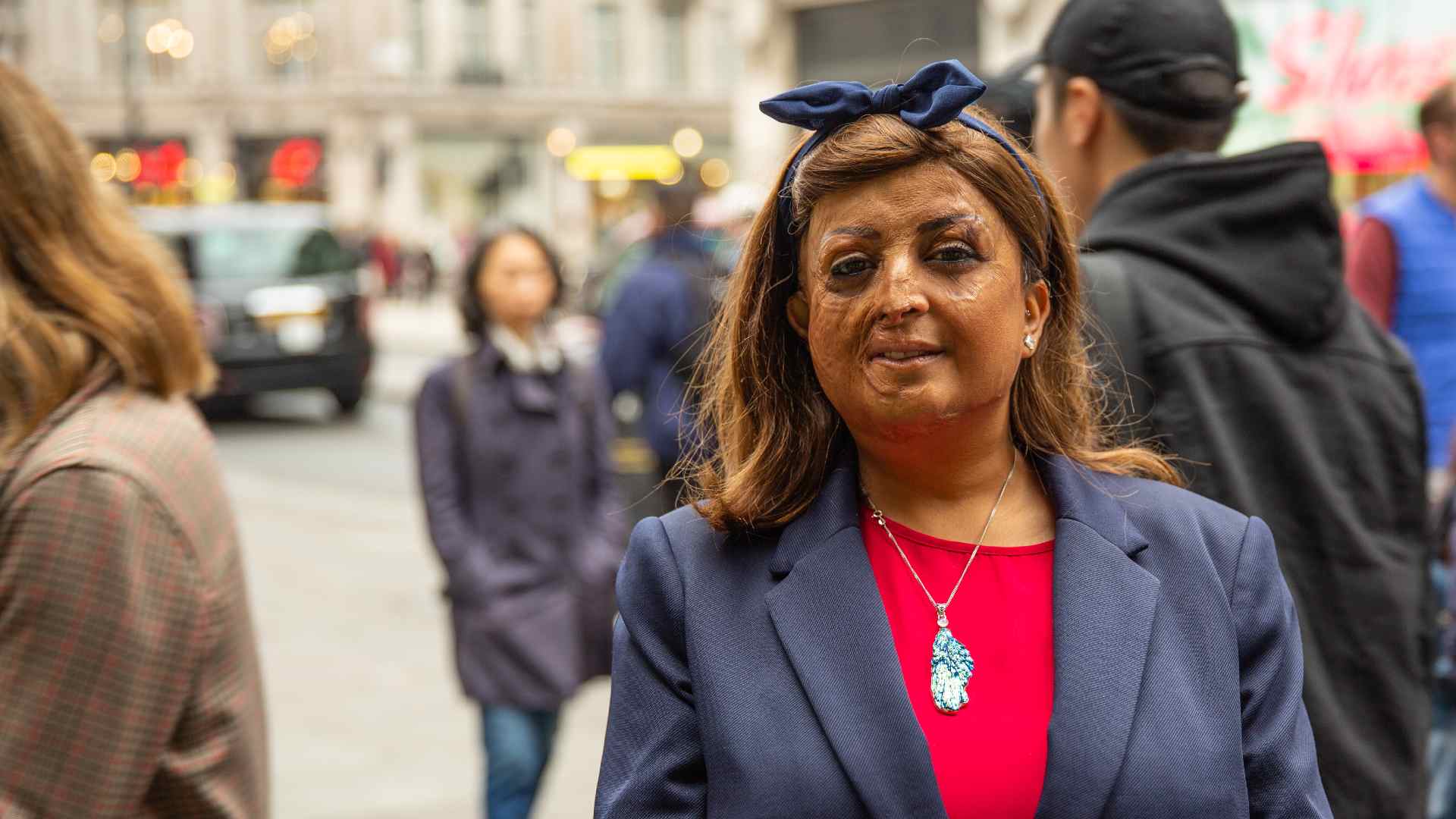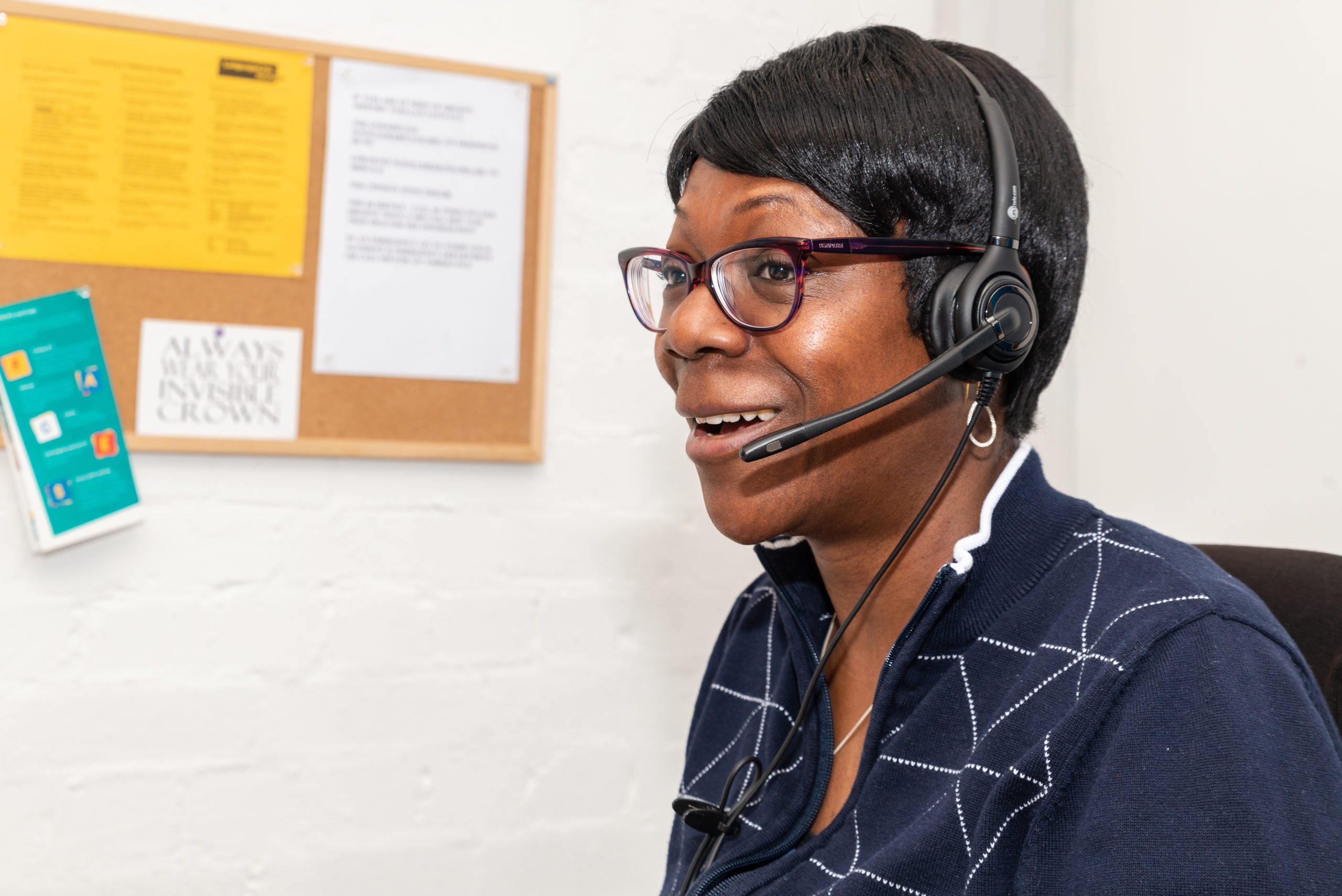Christine’s story: “Dealing with my scars”
Christine, who sustained burns at the age of 3, tells us how pursuing her dream to be a performer started her on a journey towards self-acceptance.

Information about burns and how they can affect your appearance, plus guidance on support available from Changing Faces and other organisations.
Burns are damage to the skin caused by heat or chemicals. Injuries caused by hot liquids or steam are called scalds.
Burns can cause:
The pain you feel may not reflect the seriousness of the burn. In some cases, severe burns cause little or no pain.
Many burns heal with minimal scarring, but deeper wounds can cause lifelong scars. This can cause emotional and psychological impacts such as low confidence and self-esteem – but help is available to help you overcome these challenges. On this page, we discuss burns and how they are treated, and explore the support that is available to help you with the impact of scarring from burns.
I have now accepted my scars and wouldn’t want to change them now. I want to portray them in a positive light. I wear my scars with pride as each has its own journey and story to tell.
The skin is made up of three layers:
Broadly speaking, the seriousness of a burn is linked to its depth. There are five types of burn, linked to different depths of the skin.
We have included some information about how the wound may feel to the touch to help you identify the type of burn, however you should avoid touching the burn unless necessary.
These minor burns involve damage to the epidermis. They do not cause blistering so may not feel any different in texture to the surrounding skin.
These burns involve damage to the epidermis and also some damage to the dermis. They become pink and painful and small blisters may appear. They tend to heal within seven days.
Both types of superficial burn are also known as “first degree burns”.
Both the epidermis and dermis are damaged. Skin becomes red, blotchy, swollen and blistered, and may be dry or moist. The wound may be very painful or painless.
The burn may feel dry, moist, swollen or blistered when touched.
These are also known as second degree burns.
All three layers are damaged. The skin is burnt away and the tissue underneath appears pale or blackened. Any remaining skin may be dry with no blisters, and have a leathery or waxy texture. It may appear white, brown or black in colour.
Full thickness burns are also known as third degree burns.
This is the most serious type of burn, affecting bone and muscle as well as all skin layers. All nerve endings are destroyed, meaning that there is no feeling in the area affected by a fourth degree burn.
Burns can also be classified by cause:

Our friendly team are here to provide guidance on which of our services might be most helpful to you. They can also provide a listening ear if you need space to talk about the impact of a visible difference on your life.
Find out moreBurns are caused by dry heat sources, such as:
Injuries caused by hot liquid or steam are called scalds.
Injuries caused by acid and other chemicals are referred to as burns not scalds, even when they are caused by the chemical in liquid form. They are sometimes called “caustic burns”.
Immediate steps must be taken in the event of a burn or scald. You can read about first aid procedures and what is likely to happen if you go to hospital here on the NHS website, and also find out when to seek medical help.
If the burn goes deeper than the top layer of the skin, a skin graft might be needed as the wound will be unable to heal by itself.
The length of time it takes for a burn to heal depends on how large and deep it is. As a rule:
After receiving a burn, some people experience psychological symptoms including anxiety, stress, depression and post-traumatic stress disorder (PTSD).
If you experience these impacts or your consultant thinks you are at risk of them, you may be referred to a clinical psychologist. They will help you with things such as PTSD, anxiety around treatment, sleep problems, pain management, self-confidence and adjusting to a change of appearance. If you’re not referred and you feel it would be helpful to you, ask your consultant about this.
Whenever people made hurtful comments, I would run away and find a place to hide and cry. I never cried in public because I never wanted to let people know how much it hurt.
Superficial burns heal without causing significant long-term scarring. However, moderate or severe burns may cause permanent scarring, discolouration and changes to the shape of the affected area.
Scar or graft areas may appear dark pink, deep red or purple because of changes to the blood circulation. This may become more noticeable when the temperature changes or when you are exercising. Your natural skin colour may return after healing. Deeper burns tend to have a different colour to the rest of your skin. Damage to oil and sweat glands may also result in dryness and a dry appearance.
Further skin grafts may be required once the wound has healed and this may help with pain and discomfort as well as the appearance of the burn.
Some people find that scarring from burns can affect self-confidence and self-esteem, particularly if it is on a part of your body which is visible in public.
It can take time to adjust to the change in appearance and at first you may feel self-conscious going out in public. You may be more aware of people looking at you, and this can be uncomfortable. Some people may ask questions or make comments about your appearance.
Support is available to help you overcome these challenges. Please read the next section for more information about the help you can access.
Christine, who sustained burns at the age of 3, tells us how pursuing her dream to be a performer started her on a journey towards self-acceptance.
Graham sustained burns as a child. Now he's sharing his story to encourage young people who look different to never limit themselves.
Tatyana is a burns survivor. She shares her story of adjusting to life with a visible difference.
If you are struggling with the impacts of a burn on your appearance, help is available.
Here at Changing Faces, our trained wellbeing practitioners can offer confidential, one-to-one sessions as part of our counselling and wellbeing support service – and many people find it useful to talk through their thoughts, feelings and experiences. We also have a wide range of self-help materials including guides which cover issues such as loss of identity, self-esteem and confidence-building exercises.
You do not have to hide your scars to fit in with other people’s expectations. However, if you decide that reducing the appearance of your scars is the right option for you, we may be able to help through our Skin Camouflage Service. Skin camouflage is the use of specialist, highly pigmented creams and powders that can be used to reduce the appearance of a mark, scar or skin condition. Our Skin Camouflage Service is recommended by the NHS and you can read about in this dedicated section of our website.
Skin camouflage can reduce the appearance of burns by matching to the surrounding skin colour but it does not change the texture of the skin or alter raised/indented skin. In our Skin Camouflage Service, we cannot apply skin camouflage to skin that is infected, inflamed, or broken.
We offer a range of other support for people with scarring from burns, including:
If you would like to enquire about our services, please contact our Support and Information Line. As well as acting as a gateway to our services, our team can also provide support calls so you can talk about the impact of scarring from burns on your life.
Guidance, support and advice is also available from other organisations. Please follow the links to their websites to learn more.
The Katie Piper Foundation supports survivors of burns and people with some other types of scarring via their Rehabilitation Centre or at-home programmes delivered over video call. They also offer access to hair restoration through transplant surgery, micropigmentation and hair replacement systems.
Dan’s Fund for Burns provides assistance to burn survivors across the UK, offering job retraining, equipment, emergency funding and emotional support for burn survivors. They also offer online support, providing a place for burn survivors to talk through their experiences.
Adult Burn Support UK is run by Dan's Fund for Burns and signposts information on aftercare and support available to adult burn survivors in the UK. They also host a moderated live online chat and one-to-one Befriender peer support service for adult burn survivors.
A national, highly specialist psychological service based at North Bristol NHS Trust, supporting adults (16+) with appearance-related distress. They can provide face-to-face and remote support via NHS Attend AnyWhere. Please speak to your GP or healthcare professional to discuss a referral.
Please have a look at the NHS conditions page for official guidance on burns, including when to seek medical attention and information about treatments available on the NHS. You will also find out what treatments are available on the NHS and how to seek help.